Sergia tenuiremis (Kroyer, 1855)Common name(s): Ocean sergestid |
|
| Synonyms: |  |
| Phylum Arthropoda
Subphylum Crustacea Class Malacostraca Subclass Eumalacostraca Superorder Eucarida Order Decapoda "Natantia" (shrimp--not a formal taxonomic category) Suborder Dendrobranchiata Family Sergestidae |
|
| Sergia tenuiremis captured below 500 m depth off Point Conception, CA, Sept 1992. This photo is of a preserved specimen which has lost its darker original color. The animal has also lost its long, fragile second antennae which are longer than the body. | |
| (Photo by: Dave Cowles Oct 2006) | |
How to Distinguish from Similar Species: Eusergestes similis lives at shallower depths and has a bioluminescent organ of pesta. It has no tubercle on the eyestalks but it does have a supraorbital and a hepatic spine on the carapace. Its rostrum is pointed and the body is partly transparent.
Geographical Range: Worldwide: Pacific, Atlantic, Indian oceans
Depth Range: 570-1000 m or deeper
Habitat: Bathypelagic
Biology/Natural History: This bathypelagic species is widespread but not as common as are many other bathypelagic crustaceans along our coast. Near the Canary Islands it appears to vertically migrate to near the surface at night. Sergestids swim through the midwater, using their long antennae to detect vibrations of potential prey which they grasp with their pereopods.
| Return to: | |||
| Main Page | Alphabetic Index | Systematic Index | Glossary |
References:
Dichotomous Keys:Kozloff 1987, 1996
Wicksten, 2009
General References:
Butler,
1980
Scientific Articles:
Cowles, David L.; Childress, James J.; Wells, Mark E., 1991.
Metabolic rates of midwater crustaceans as a function of depth of
occurrence
off the Hawaiian Islands: Food availability as a selective
factor?
Marine Biology 110: pp. 75-83
Flock,M.E.; Hopkins,T.L., 1992. Species composition, vertical distribution, and food habits of the sergestid shrimp assemblage in the eastern Gulf of Mexico. J. Crustacean Biology 12:2 pp. 210-223
Foxton, P., 1969. The morphology of the antennal flagellum of certain of the penaeidea (Decapoda,Natantia). Crustaceana 16:2 pp. 33-42
Kikuchi,T.; Nemoto,T., 1986. List of pelagic shrimps(Crustacea:Decapoda) from the Western North Pacific. Bulletin of Biogeographical Society of Japan 41:7 pp. 51-59
Pearcy,W.G.; Forss,C.A., 1966. Depth distribution of
oceanic shrimps
(Decapoda;Natantia) off Oregon. J. Fisheries Research Board
Canada
23:8 pp. 1135-1143
Web sites:
General Notes and Observations: Locations, abundances, unusual behaviors:
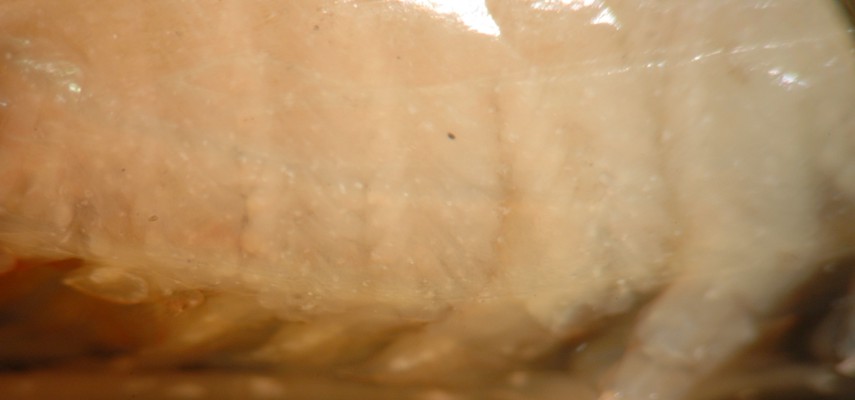
This closeup of the side of the carapace
shows the dendrobranchiate (branching like a feather) gills
underneath.
This gill pattern is characteristic of dendrobranchiate decapods such
as
Penaeids but is not seen in true shrimp or in crabs.
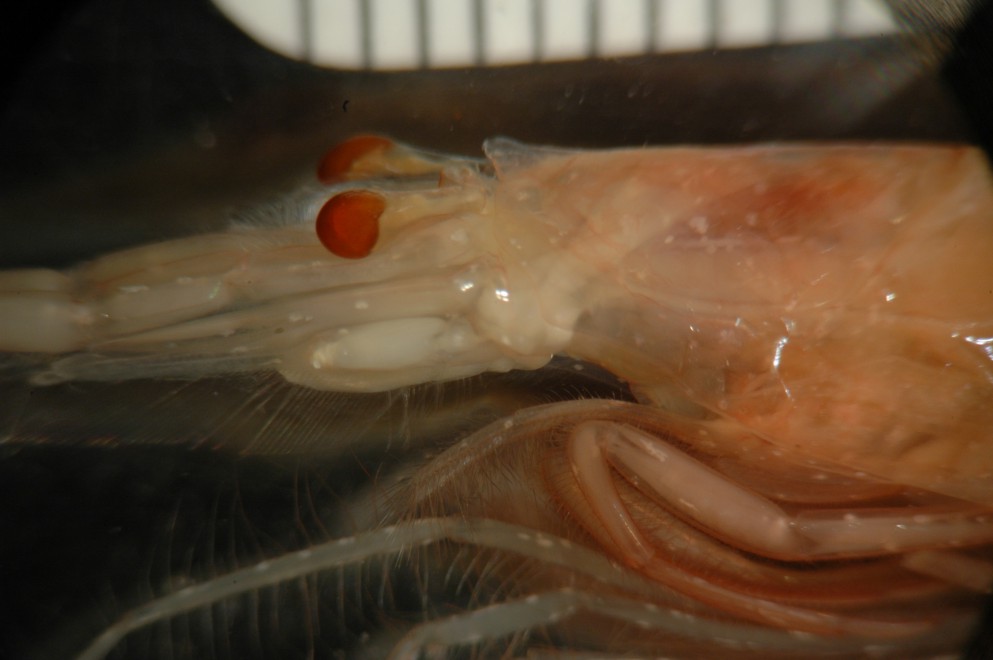
As in most seregestids, the rostrum
is very short. Unlike Eusergestes
similis, the rostrum
of Sergia tenuiremis is
blunt. There are no supreaorbital
or hepatic
spines on the carapace.
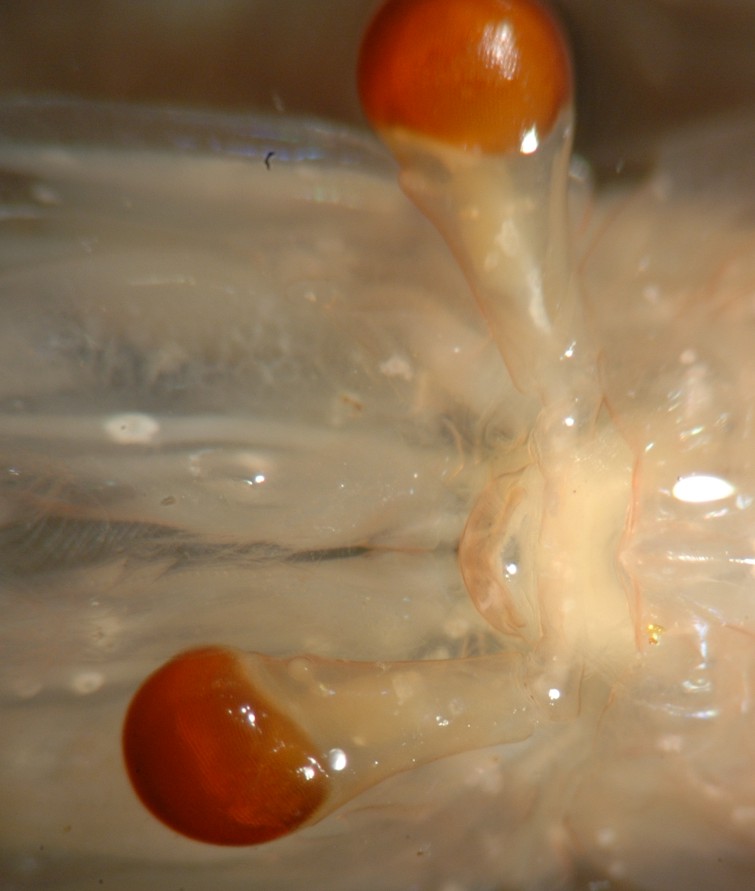
Unlike Eusergestes
similis,
there is a tubercle
on the medial
eyestalks in Sergia tenuiremis. In this
view the animal is
facing left.
 |
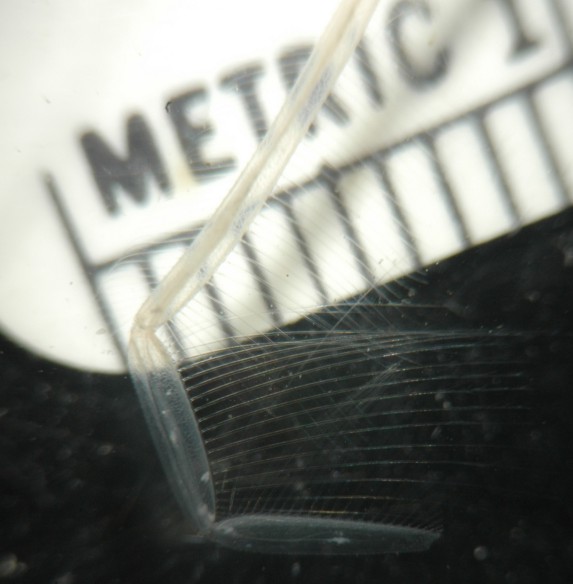 |
| Pereopods 1-3 have tiny chelae. This is a photo of the propodus and dactyl of pereopod 2. The scale behind is millimeters. Note also how the pereopods have many setae | The posterior 2 pereopods (#4 and 5) are not chelate. This photo shows the carpus, propodus, and dactyl of pereopod 5. Note that the setae are all in the same plane, a configuration often seen on appendages used for swimming. |
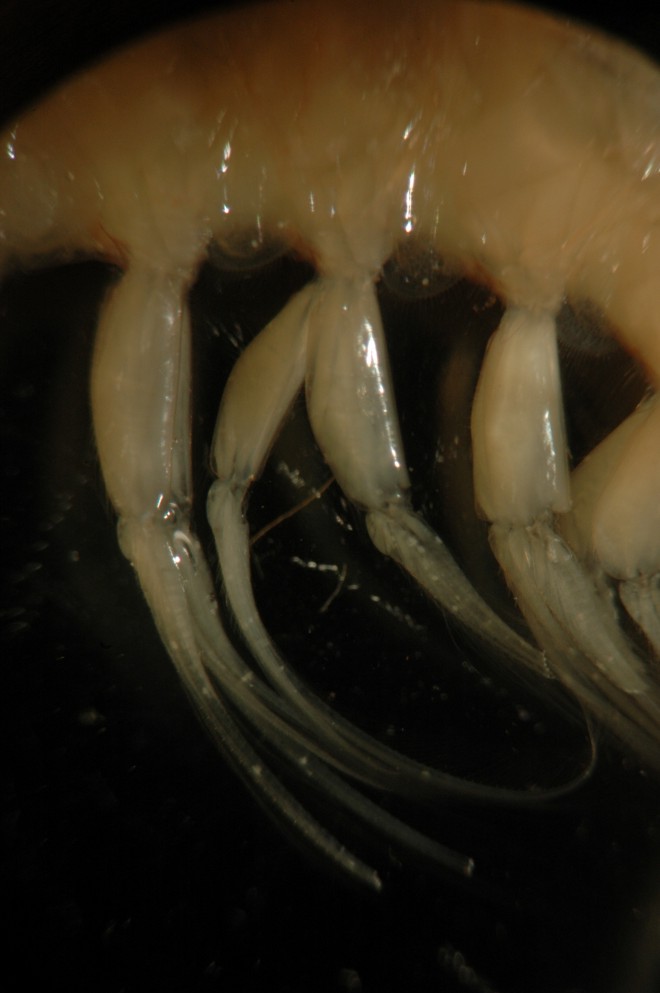
The pleopods are feathery and used for swimming. This view is
of pleopods 2-4 (from left to right)
Authors and Editors of Page:
Dave Cowles (2006): Created original page